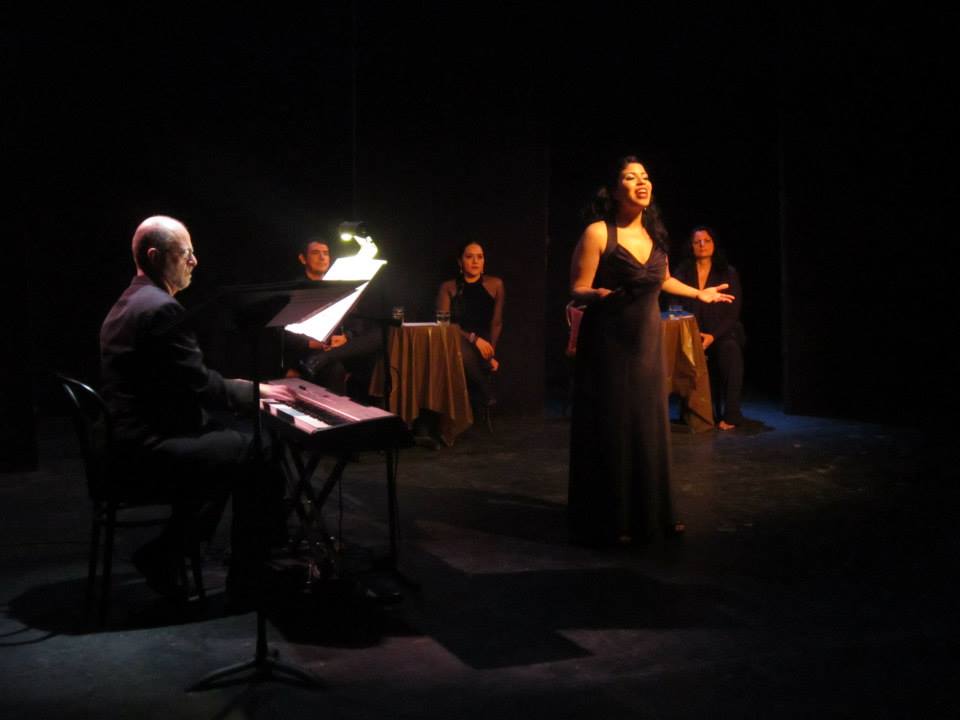Amidst the exceptional diversity of tango – orchestras, dance shows, milongas, club tango – it is easy to forget the tango song. I do not just mean those singers who front full bands or the passionate and accomplished amateurism of the tango bar. I am also thinking of the tango canción as a sort of art song, the definition of which is a vocal composition set to a poem and accompanied by a piano in a recital format. This is no encrustation upon the tango, the lyrics to which were often written by the poets of the day – even Borges tried his hand at it. And although the art song is usually classical (lieder are its exemplar), it is not exclusively so, and there is some overlap with the cabaret tradition. Ute Lemper sings tangos in this vein (although I do not personally care for her renditions), and there are spots in Buenos Aires of a sophisticated air, such as La Biblioteca and Classica y Moderna, in which the tango as art song, or as cabaret, is the norm.
Aside from having heard Lemper’s tango show at Joe’s Pub, I have not seen this sensibility expressed in New York, with the exception of a recital a few years back at a Brooklyn gallery by Sofía Tosello and the pianist Octavio Brunetti. It was in fact the latter that drove home for me the affinity of tango and the art song and set me to thinking about its potential. That was the only time, I should say, until last night, when I attended VOCES DEL TANGO at Teatro LATEA, a show conceived and directed by Pablo Zinger, who also narrates and provides accompaniment for four singers and a pair of dancers. There is no instrumentation aside from the piano and the singers are unaided by microphones (itself a rare pleasure); the songs are sung individually, with only occasional backing from the others.
The program is historically arranged, beginning with Carlos Gardel, traversing the ‘40s, and arriving at Astor Piazzolla, with whom Zinger, whose tango pedigree is impeccable, played. That is a pretty fair bracketing of tango in what historians will probably see as its formative period, bringing it from its first clear definition to its culmination; what went before and has come after will be seen as source and legacy. Zinger is from Uruguay, which takes equal credit with Argentina as the cradle of tango; the singers are Mexican, Venezuelan, Honduran-American, and Cuban, the dancers Polish and French. The event is devoid of Argentinians, but even that is consistent with the art song tradition and its connection to opera and cabaret: the singer is not limited to her or his native language or culture.
What they sing is the story of the music intertwined with the drama of the demimonde of the Rio del Plata of Argentina and Uruguay, with its standard plots and stock characters: prostitutes and pimps, street toughs and hangers on, rich kids and jilted lovers, artists and mama’s boys. Gizelxanath, the Mexican, is the one of the group to whom the art song comes the most naturally, given her career in opera and zarzuela; her renditions are fascinating – little stories told with wit, character, vocal precision, and theatrical flair. The Honduran-American, Diana Lopez, who has been singing tango for a mere year-and-a-half, explores the upper ranges of her voice to an extent that I have not heard previously, and, especially in her version of Piazzolla’s “Balada para un loco,” pushes through the emotionality of the music to a deeper sense of the lyrics as a dramatic vehicle. Leonardo Granados from Venezuela, as well, understands that every art song is a drama in miniature; he is a little awkward on his feet at first, but is a great serio-comic success. Lourdes Simón, a Cuban who specializes in bolero, is the least experienced of the singers when it comes to tango, and was a little tied down to her music stand, but was essential in rounding out the event. In their handful of dance numbers, Laurence Martin and Stefan Zawistowski struck just the right balance between terpsichorean expression and enhancing rather than detracting from the songs.
VOCES DEL TANGO is one of the loveliest and most intriguing tango events I have seen in New York and, if you have any interest in tango song at all, ought to be taken in on this, its final day.
For future events at Teatro LATEA, click here.

One response to “Voces del tango”
[…] and its values suggest mid-century nightlife at its most glamorous. Structurally, it resembles VOCES DEL TANGO, which I saw late last year from the same writer and conceiver, Pablo Zinger: four singers, their […]